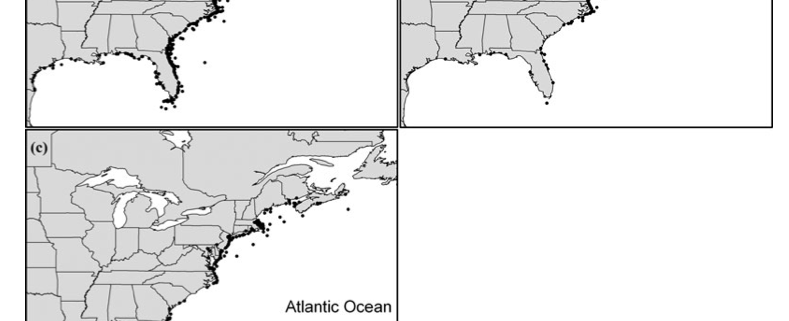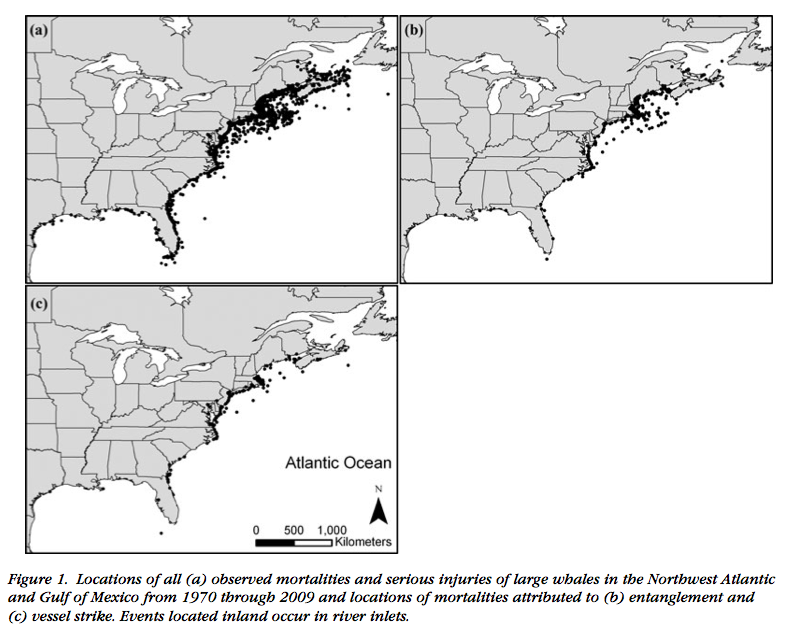Assessing Management Efforts for Large Whales
by Fiona Graham, RJD Intern
Sometimes imposing a regulatory action alone is not enough. Implementing a new policy aimed at reducing the mortality of a species or group of species requires scientific studies to gather the information necessary to enact that policy. Some important questions to be asked are which species need protecting? Where are they most vulnerable, both spatially and temporally within their life cycle? What threats are they faced with? Once a clear idea of how and why a species needs protected is formed, regulations can be put into place using that information to conserve that species. While this may be a great start, following up with an assessment of the management that has been put into place can be just as important. Maximum effectiveness depends upon strong science from beginning to end.
A recent study by Julie Van Der Hoop and colleagues provides one such assessment of management attempting to mitigate human induced mortalities of large whales in the Northwest Atlantic. To do this, the team complied reports of strandings, mortalities and necropsies from 1970 to 2009 for 8 species of large whales, and determined temporal and spatial trends. They found that 66.9% of mortalities were related to human activities, and that the leading cause of death was entanglement in fishing gear.
Through the statistical analysis involved in their study, the team also found that, despite the regulatory efforts to mitigate mortality in these whale species, probabilities of entanglement and vessel strike mortality increased significantly over the years. Numerous mitigation efforts were enacted in 2003 aimed at reducing human induced mortality, however these have not been found to be successful yet according to this study. Nevertheless, they do not reject the possibility of the success of targeted measures for more localized areas since their analysis looked at wide-scale trends. They note that restricting speed has not been successful in reducing the death of these whales from being hit by vessels but suggest, however, that restructuring shipping lanes may be a more successful alternative.
Studies such as these are critical in providing direction for modifying management regulations and defining areas for improvement in existing policies, therefore ensuring maximum effectiveness.
REFERENCES
VAN DER HOOP, J. M., MOORE, M. J., BARCO, S. G., COLE, T. V.N., DAOUST, P.-Y., HENRY, A. G., MCALPINE, D. F., MCLELLAN, W. A., WIMMER, T. and SOLOW, A. R. (2012), Assessment of Management to Mitigate Anthropogenic Effects on Large Whales. Conservation Biology. doi: 10.1111/j.1523-1739.2012.01934.x





Leave a Reply
Want to join the discussion?Feel free to contribute!